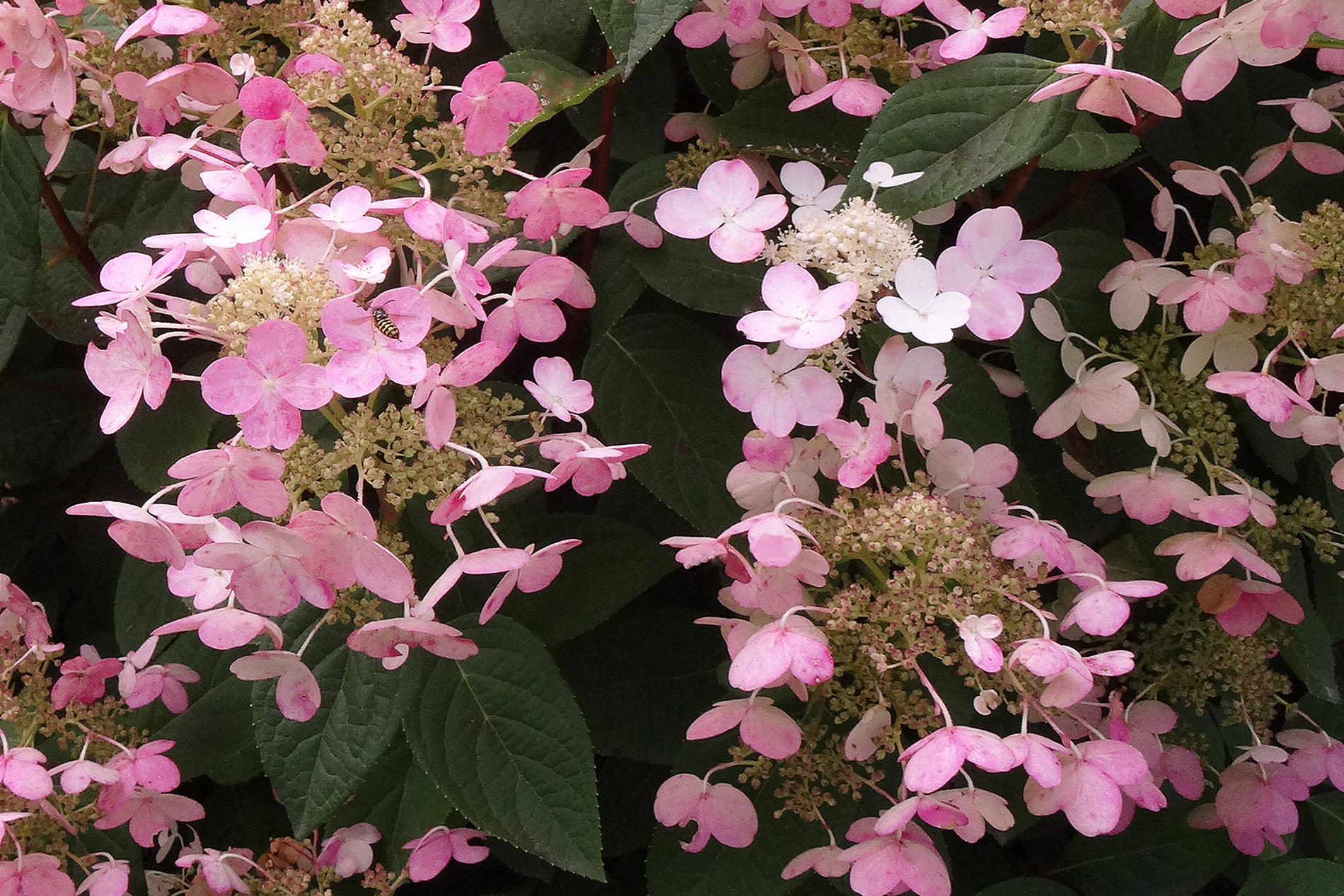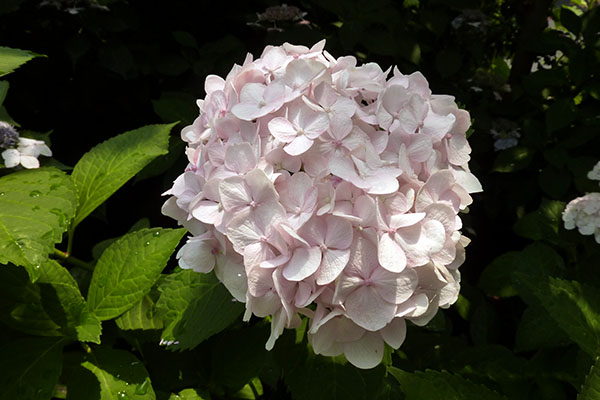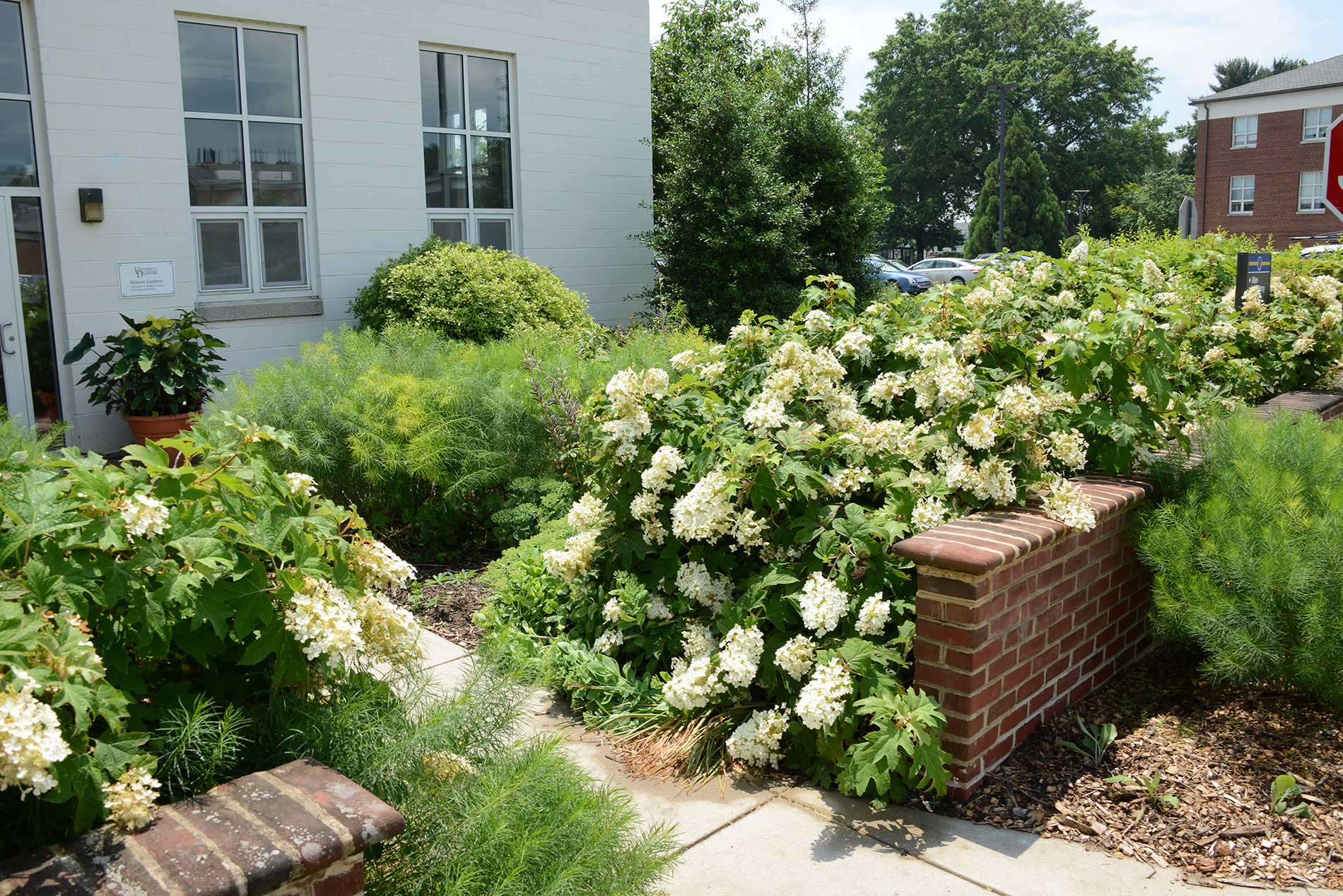Hydrangea paniculata
Panicled Hydrangea
Japan, Taiwan, China
Upright small tree or densely branched shrub.
Sun to partial shade. Prefers moist, well-drained soil; adaptable. Plants can be pruned in late fall and winter and will flower the following year on new growth.
Larger selections can be trained into small flowering trees but the new compact cultivars are best grown as dense shrubs that can be pruned to ground periodically to minimize height.
Opposite (sometimes whorled), simple, serrate, ovate to elliptical; 3-6". Minimal yellow fall color but typically green.
Buds are imbricate, 4-6 scaled, brown.
Older wood, 1 to 2 inches or greater, assumes a gray-brown, ridged-and-furrowed look.
Pyramidal clusters 6 to 8 inches in summer to fall. Flowers are white and fade to various shades of pink. Either large petaled sterile flowers or small fragrant, fertile flowers but the sterile flowers typically dominate visually. New cultivars fade to deeper and more vibrant pink earlier in development.
Dry capsule, not showy but inflorescences, with the intact sterile flower sepals that can be cut and dried.
Cuttings or seed.
'Ivlomindy' Mega Mindy (TM) - The compact plants produce large upright panicles on sturdy stems. Flowers begin white then fade to striking pinkish red in late summer.
'SMHPFL' Fire Light (TM), this selection is much smaller than the species and has pure white flowers that transition to pomegranate pink by late summer, retaining color into fall.






